In the holy season of Lent, the Church exhorts us to “turn away from sin and believe in the Gospel” because, as Isaiah said so many centuries ago, “our sins have become like scarlet,” and even more graphically, “like polluted rags” (1:18 and 64:6). Sin is what alienates us from God and neighbor, and thankfully, the Church doesn’t gloss over that inconvenient little fact.
The Mercy of Christ
But being reminded of our sinfulness is not morbid. Like the blind beggar, Bartimaeus, who cried out, “Jesus, Son of David, have mercy on me!” (Mark 10:48), we are fully confident that the Lord of all mercies will open the riches of His forgiveness to us when we humble ourselves like that. In the Christian tradition, Bartimaeus’ plea has become a liturgical prayer, the common prayer of repentance for believers.
The ancient Christian Church formed the original penitential rite for all Catholic liturgies with the Greek words of the New Testament:

But the Kyrie doesn’t just belong to Christians. It is clearly the universal plea of the human condition in relation to its Creator. As a testimony to this fact, the Wikipedia entry for “Kyrie Eleison” gives translations of this Greek phrase into at least 85 different languages!
Although there are Latin translations of the Kyrie, the ancient monks who created the Latin liturgy kept the Greek term because it was so beautiful and expressive, and to this day we sing the Kyrie in modern liturgies. There is hardly a phrase that has been so frequently and beautifully set to music over the centuries than the Kyrie, and the video you will see below is one of the most beautiful renditions of it I have ever heard. It will take your breath away.
Mary vs. The Mongol
The monks who perform the Kyrie in the video are from the Sretensky Monastery in Moscow, and if you are a regular reader of this newsletter, you probably won’t be surprised to learn that there is a backstory to this place that needs to be told! If the Kyrie is a sacred window into the transcendent, an icon of the holy Mother of God 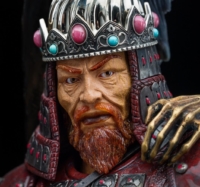 and a community of faith are even more so.
and a community of faith are even more so.
In 1395 AD, the brutal Turkish-Mongolian warlord, Tamerlane, was approaching Moscow from the east with his Islamic army, and he was already well-known for his atrocities against Christian populations. In fact, he didn’t just kill Christians, he seemed to kill everyone and destroy everything in his path. He would have made his ancestor, Ghengis Khan (1162-1227), proud.
Russia’s Grand Prince Vasily I was well aware of the threat, not only to his people but to their ancient Christian culture as a whole. So, he ordered Russia’s most precious religious artifact, the Icon of Our Lady of Vladimir, to be moved from its unfortified home in the east and brought to Moscow for safekeeping so that the Tamerlane and his Mongols would not destroy it as they swept through the Russian steppe from the east.
The name of the monastery – Sretensky – comes from an Old Slavonic word meaning “meeting” and derives from that very event. It is said that Prince Vasily, the 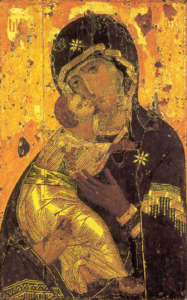 clergy, and the people of Moscow went out to meet the icon as it was being brought into the city. They were so moved at the sight of their holy mother coming to them that they wept with joy and supplication for her to save them from the invaders.
clergy, and the people of Moscow went out to meet the icon as it was being brought into the city. They were so moved at the sight of their holy mother coming to them that they wept with joy and supplication for her to save them from the invaders.
Prince Vasily enshrined the icon in the archbishop’s cathedral that evening so the people could come and pray in its presence to beg God to bestow His mercy on them. It is said that Prince Vasily himself kept vigil there the whole night weeping copious tears that God would save his people through the intercession of their holy mother.
And indeed, God heard His mother’s Kyrie Eleison for the people. The very next day the invading army inexplicably departed from that area, and
A Monastery Born and Reborn
The rejoicing populace, of course, credited the holy Virgin of Vladimir for saving them, and in gratitude for their rescue, Prince Vasily built – you guessed it – a monastery on the very spot where the sretenie, “meeting” of Our Lady’s icon and the people of Moscow took place.
That’s what deeply religious cultures do: they build religious shrines on spots where God intervenes mightily in human history. Sadly, in the de-Christianized West today, we just build malls and worship at secular altars. Be that as it may, the Prince founded the Sretensky Monastery in 1397, and for over six hundred years it has remained one of the most important centers of Russian Orthodox spirituality and learning. Today it houses a cathedral, a seminary, two hermitages, and one of the largest religious publishing houses in the Russian language.
Sretensky Monastery in 1882
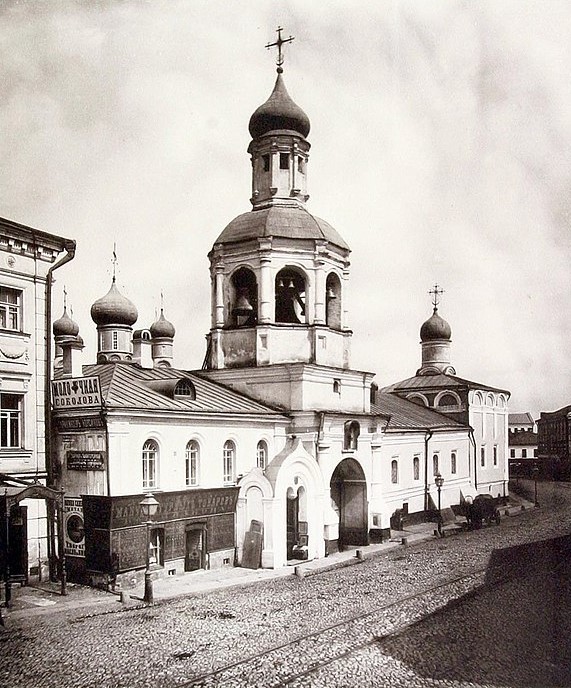
Sretensky Monastery Church Today
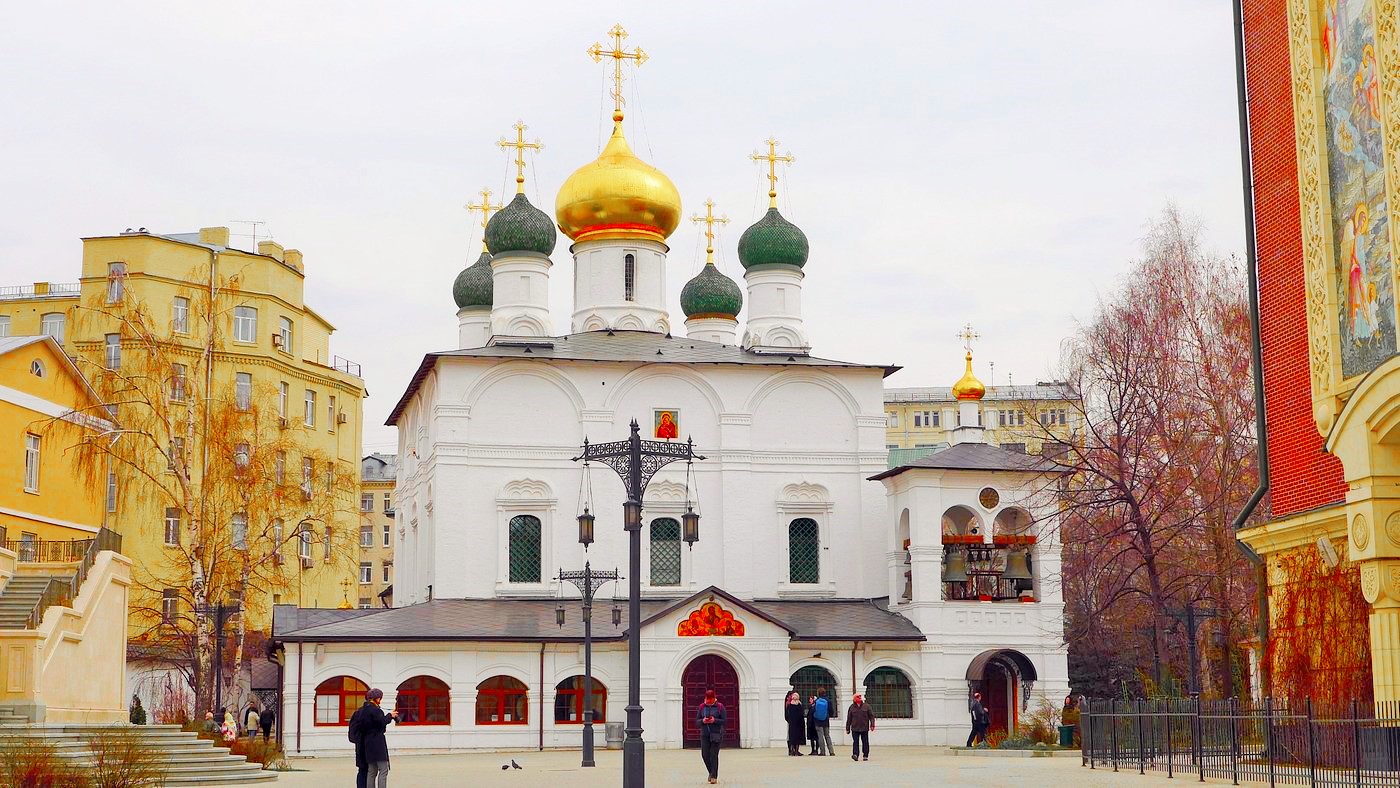
The grand monastery even survived the great Communist purge of the 20th century – but barely. Lenin’s atheistic Bolsheviks did more damage to Russia than Tamerlane ever could have done (and probably killed more people). Tamerlane’s marauders invaded, pillaged, and then went away. The Communists invaded, pillaged, and then stayed for seven decades to destroy the soul of a nation.
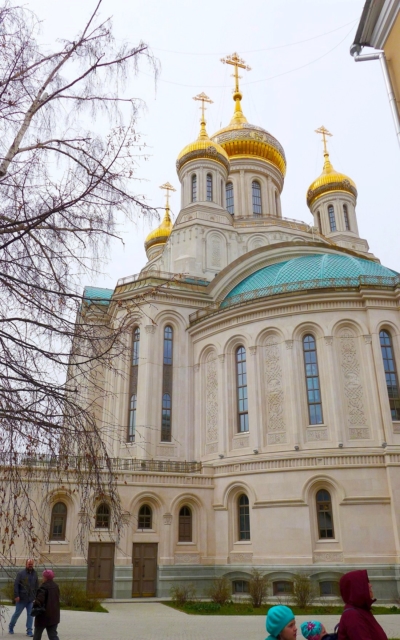 When they set upon the Sretensky Monastery in 1925 the Communists literally tore down two churches on the property and demolished all other structures, including the living facilities for the clergy and staff. They removed all the monks and used the remaining monastery building as offices of the infamous NKVD (secret police, predecessors of the KGB). On top of that, its grounds were used as a place of clandestine executions. It’s hard to imagine a greater desecration of holy ground than that.
When they set upon the Sretensky Monastery in 1925 the Communists literally tore down two churches on the property and demolished all other structures, including the living facilities for the clergy and staff. They removed all the monks and used the remaining monastery building as offices of the infamous NKVD (secret police, predecessors of the KGB). On top of that, its grounds were used as a place of clandestine executions. It’s hard to imagine a greater desecration of holy ground than that.
When Communism fell, the state returned the property to the Russian Orthodox Church in 1991, and the monastery was rebuilt and reconsecrated in 1993. One of the momentous events that took place after that was the 1995 visit of the venerable Icon of Our Lady of Vladimir on the Birthday of Our Lady (September 8th). When the icon was brought from its modern home in the Tretyakov Gallery in Moscow to the renovated monastery, some 30,000 worshippers came out in the pouring rain for two days to pay their tribute to the Mother of God and see the Icon that was responsible for the saving of their nation nearly six hundred years earlier!
[The church in this photo is the Cathedral of the Icon of Our Lady of Vladimir which is a part of the monastery now.]
Adding to the paradox of the monastery’s survival is its location. It has been situated for centuries on what in modern times has come to be called Lubyanka Street. Any student of modern history will associate that name with the infamous KGB prison – which stands right next door to the monastery. Lubyanka is not the torture chamber it once was, but its holy neighbor is certainly back to being the force of grace and light it once was.
The Pop Star
Now you may be wondering how all of this has to do with a Pop Star. I’m glad you asked. The answer is simple: a popular Russian teen singer by the name of Anastasia Gladilina is the girl who sings the Kyrie with the Choir of Sretensky monks in this video, and she was only fifteen years old when they made this recording in 2019. What I find remarkable about her performance is not only her lovely, pure voice but also her incredible poise and presence for one so young. She’s “a natural” as they say.
I’ll only highlight a few elements of the performance I’d like you to look for as you watch the video, which is less than four minutes long:
- There are no musical instruments – the human voices are the music.
- The lyrics consist of only two words that you never tire of hearing: Kyrie Eleison.
- The setting is some utterly magnificent Russian state room which provides the gilded backdrop to the black-clad monks. Note the following elements:
- The viewpoint: largely from above – as if God were looking down on the petitioners and hearing their prayer for mercy
- Golden pillars and appointments, evenly spaced to create a sense of radiance and order (heavenly symbolism)
- Inlaid parquet flooring with Anastasia stationed in the middle of the circle (earthly symbolism) and the choir of monks arrayed in a semi-circle around her (angelic choir symbolism)
- The contrast of her pure white dress against their black suits, not as a good/evil symbolism but as the two ends of the light spectrum with the chandeliers illuminating them from above (Divine Light/universe symbolism).
And don’t miss the crescendo of voices after the 2:00 minute mark. It will leave you “mesmerized”, as one friend described it.
Sublime Elements
My two favorite elements of this performance, however, are the unearthly blend of voices and the soloist’s hand gestures. The men’s voices are so smoothly integrated with one another that it’s virtually impossible to tell which men are singing the low or high registers.
And it took me a few repetitions of this performance to notice Anastasia’s hand gestures, which are subtle and elegant. The movements lend incredible depth to her performance which would otherwise have seemed static as she doesn’t move in any other way except to sing. They are measured and natural, not scripted or feigned as you would expect from a teen playing a role. Pay attention to her final hand gesture, which I won’t spoil for you until you see it yourself.
There is a good reason why this performance is such a fitting symbol for our Lenten journey. It all has to do with our hope in God’s mercy again. The monastery is in every sense “reborn” to new life; and the girl’s name, Anastasia, in Russian, means… Resurrection.
———-
[Note: This article is a reproduction of the Sacred Windows Email Newsletter of 3/05/23, so it does not end with the regular Soul Work section. Please visit our Newsletter Archives.]
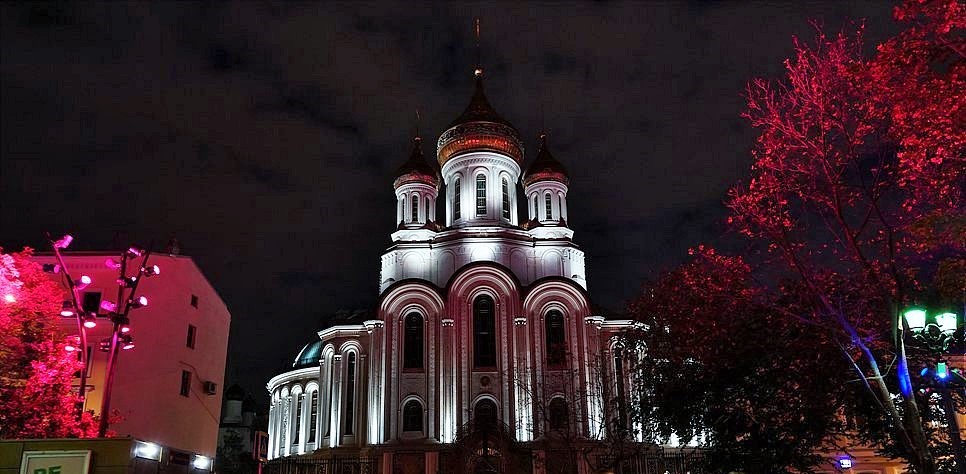
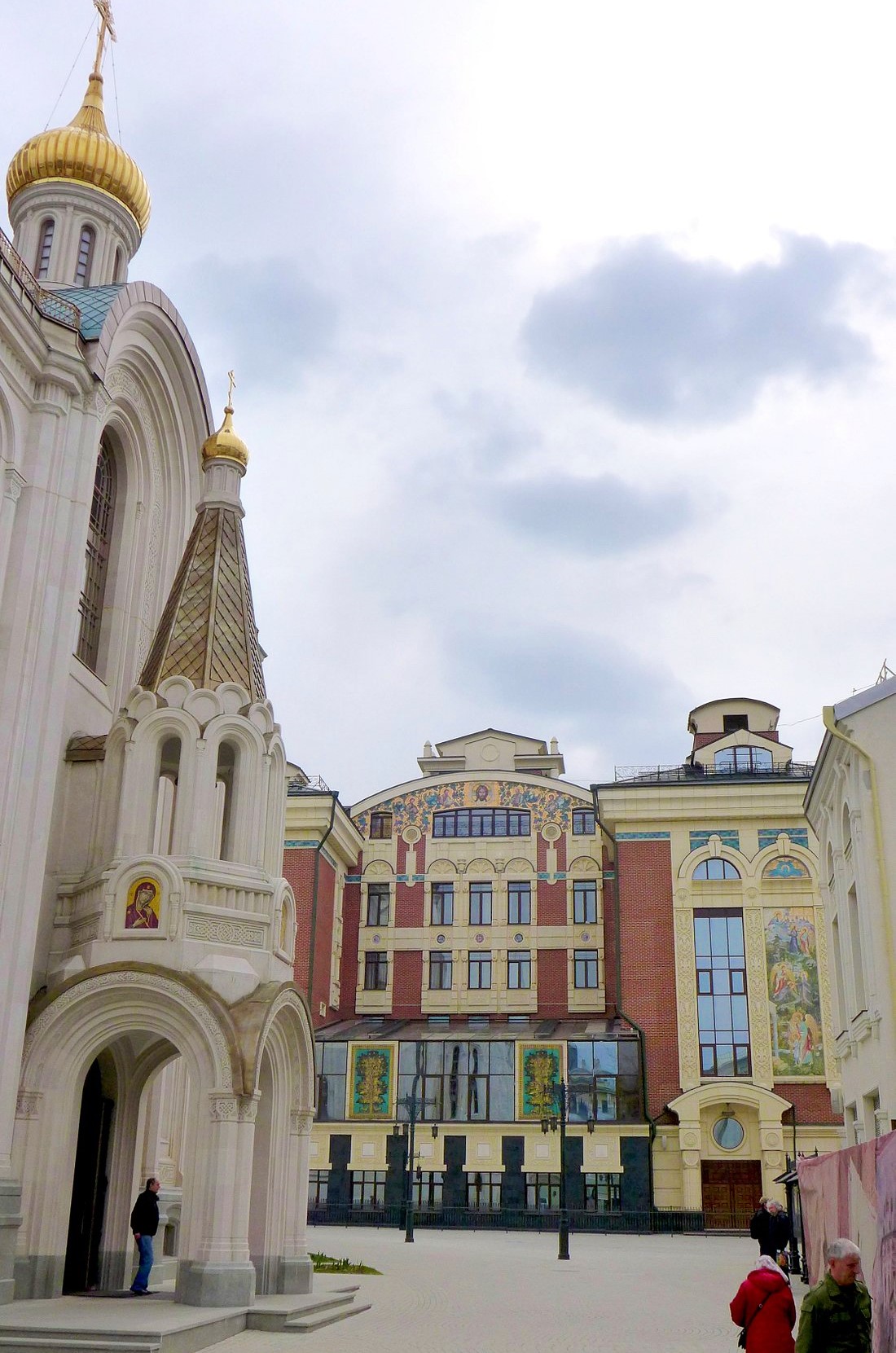
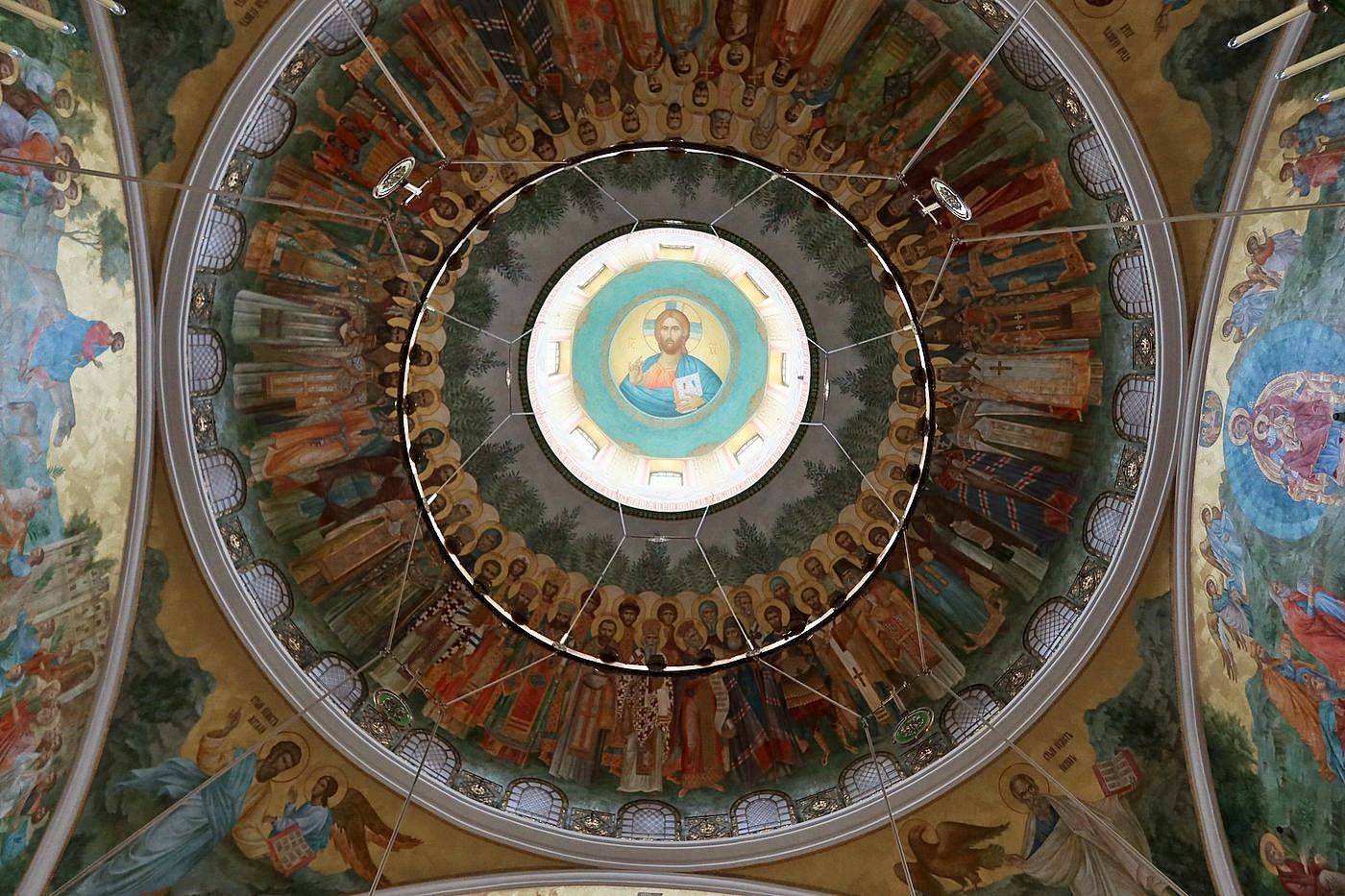
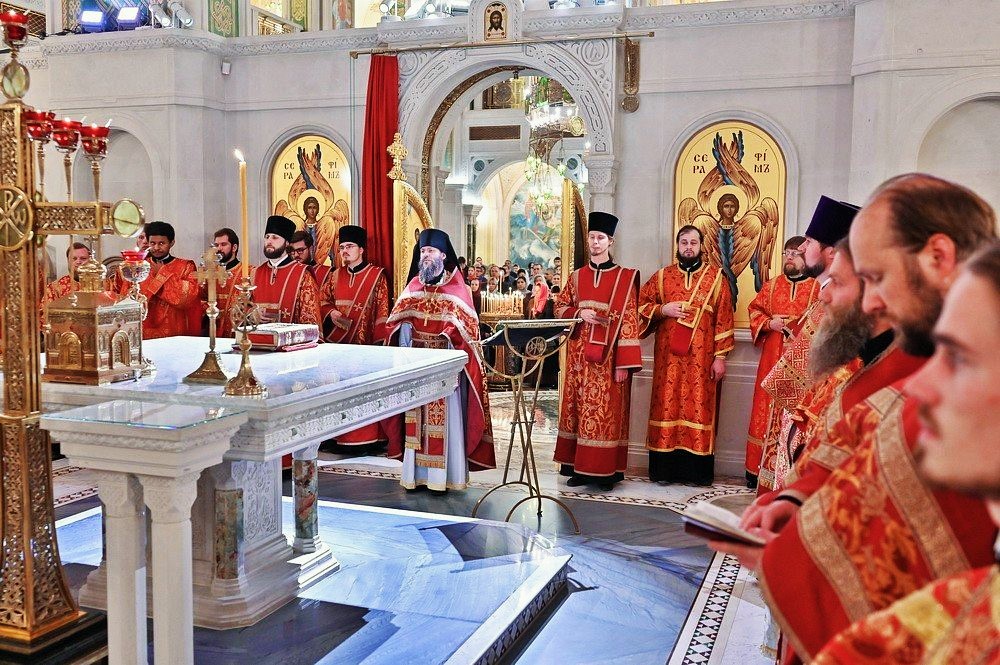
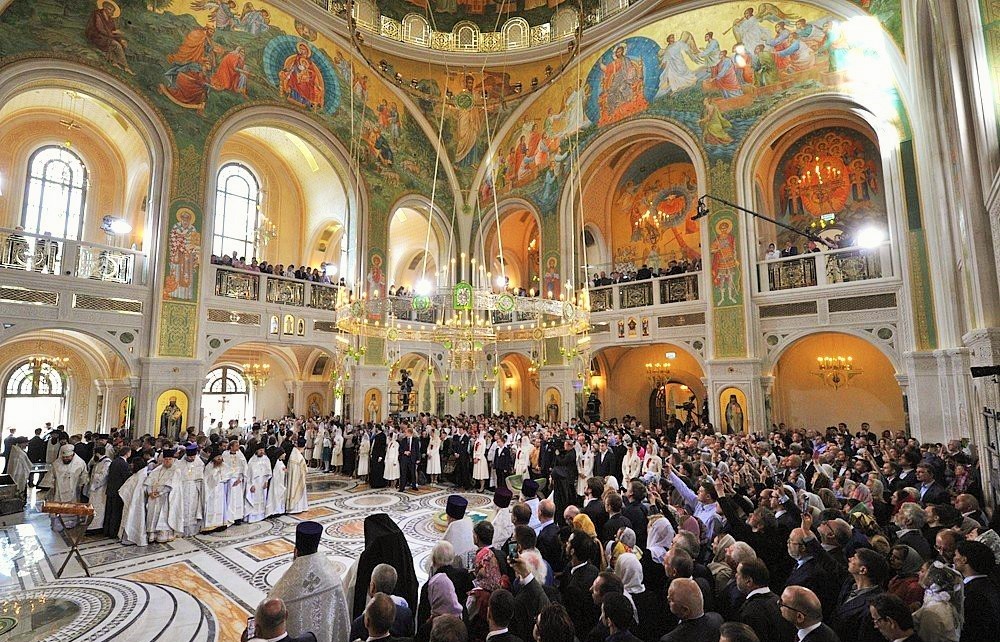

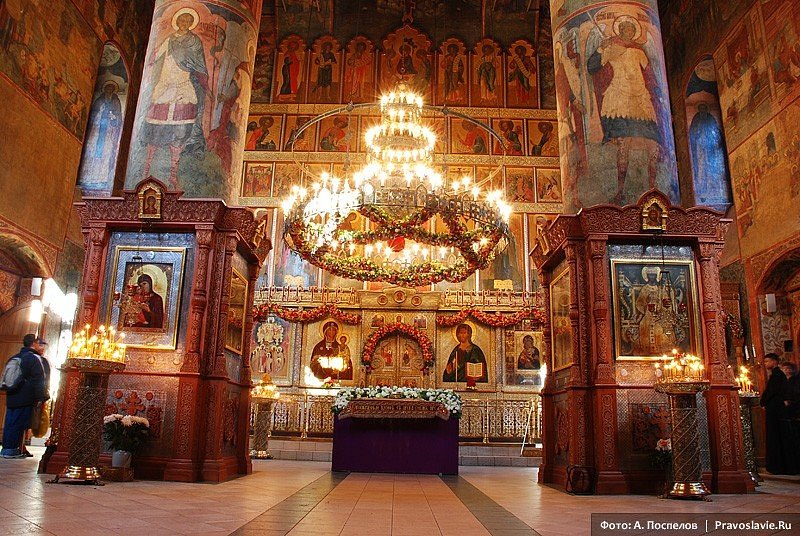
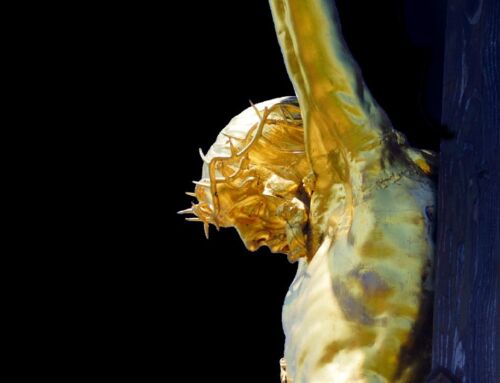
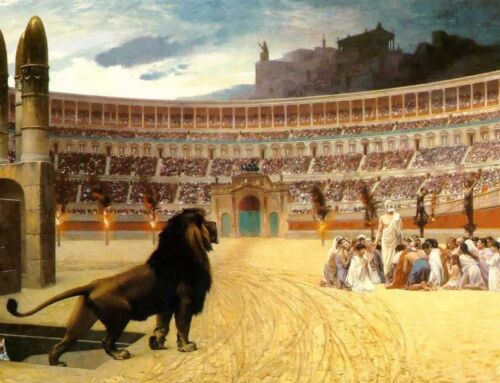
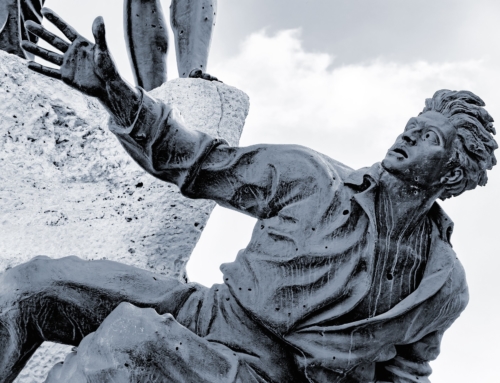
Leave A Comment